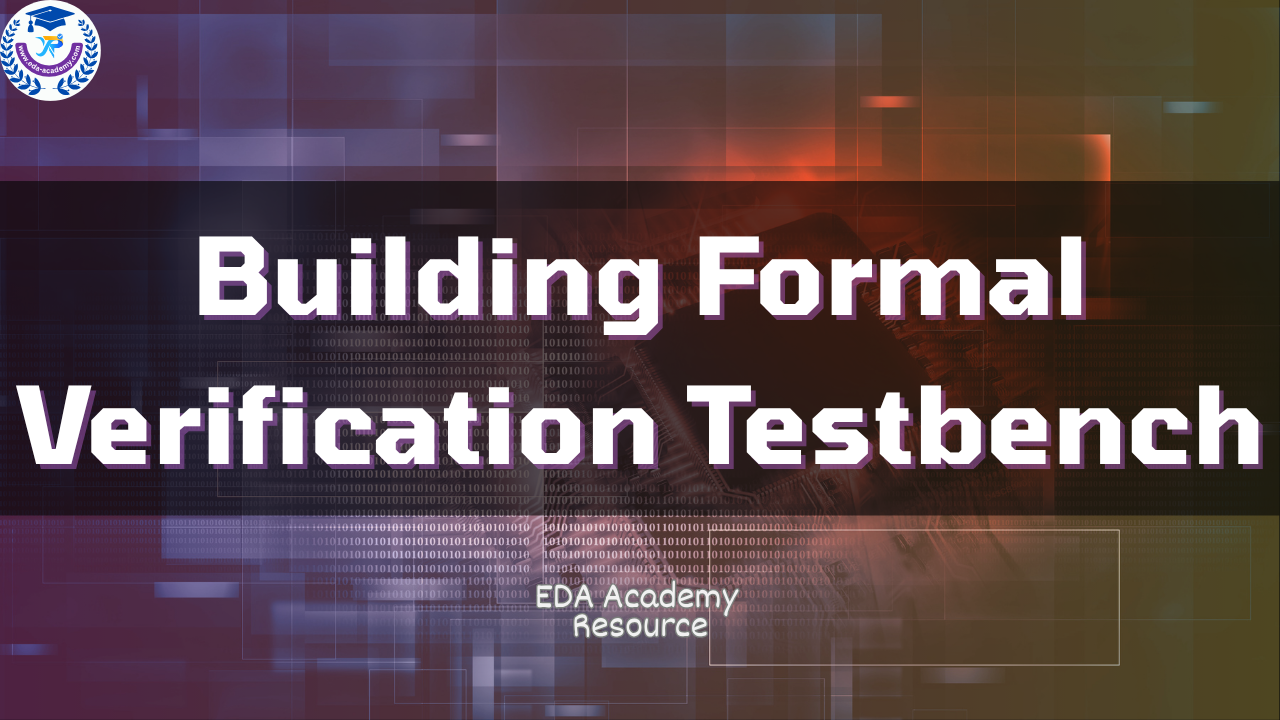Resource:
Building Formal Verification Testbench (English)
Formal verification testbenches require structured, cycle-aware, and parameterizable architectures to support scalable and modular proof analysis. Key components include cycle-based models for timing abstraction, input constraints for legal scenario bounding, end-to-end checkers for transaction-level correctness, and functional covers for coverage closure. Verification components such as formal VIPs and assertion libraries encapsulate stimulus, monitoring, and metrics for convergence. Property placement strategies and modular construction techniques enhance observability, proof depth, and reusability across multiple target designs and protocols. Integration of coverage metrics and symbolic constraints ensures full-state reachability and focused verification scope, forming a robust environment for formal sign-off.
Purchase
Our course syllabus is regularly updated to reflect the latest advancements and best practices in the field. For individually purchased courses or resources with lifetime access, students can always access the content and receive updates for free. For members, all member-free courses and resources — including future updates — are accessible during the active subscription period. This ensures that both lifetime purchasers and active members can benefit from the most relevant and up-to-date content.
Created by EDA Academy
English
Last updated July 2025

Resource: Building Formal Verification Testbench (English)
USD $199.9
-55%Today
$89.9
One-time Purchase
& Lifetime Access
What you will get:
1.2 Hours of Immersive, High-Quality Video Lessons
Professionally produced and delivered by our expert team, covering core concepts and practical demonstrations, with step-by-step explanations and real-life examples to help you efficiently absorb knowledge and apply it immediately in a short time.
Certificate of completion
Upon successful completion of the course, you will receive an official certificate issued by EDA Academy, adding value to your resume and career development.
Access on mobile and computer
The course can be viewed anytime on mobile phones, tablets, and computers, allowing you to learn easily whether at the office, at home, or on the go.
Ongoing support from EDA Academy
After the course ends, you will continue to receive ongoing support from our team to help you consolidate knowledge and solve practical problems.
Further learning plan
Provides you with follow-up learning paths and recommended resources, enabling you to continue improving your skills and expanding your career development based on what you have learned.
Resource Catalogue
Description
A formal testbench is a structured and constraint-aware environment designed to maximize the power of proof-based tools. It is built using modular components that reflect the key interactions of the system under verification while supporting exhaustive state-space exploration. Unlike simulation-based testbenches, formal environments are not driven by temporal sequences but by symbolic exploration of all valid input conditions and state transitions. The architecture incorporates several independent elements: behavioral models that define cycle-based behavior, symbolic constraints that narrow the legal stimulus space, and property checkers that define correctness expectations across multiple abstraction layers.
Testbenches rely heavily on behavioral abstraction using cycle-accurate models. These models describe sequential timing relations between interface signals and are crucial for capturing design intent. By isolating temporal behavior into models, the testbench can remain portable and reusable. Input constraints play an equally important role by bounding input behavior to valid operating scenarios. These constraints ensure the proof engine focuses only on legal design conditions, improving convergence and reducing unnecessary state explosion. End-to-end checkers validate the full lifecycle of transactions or protocols, capturing the intended functionality across multiple states or modules.
Verification components form the modular building blocks of the testbench environment. These include stimulus generators, checkers, coverage monitors, and formal Verification IP (VIP). Each component defines a contract between expected behavior and observed outcomes. Structuring the testbench around components enforces clear interface boundaries and allows localized proof control. These components are often parameterized to support reuse across different modules or protocol instances. Their abstraction facilitates scalable verification of complex subsystems such as register files, memory controllers, and communication interfaces.
Property placement is a key structural decision in formal testbench design. Assertions can be embedded within the DUT, wrapped around it in interfaces, or integrated into standalone monitors. The placement strategy affects observability, composability, and tool optimization. Distributed assertion strategies enable parallel proofing and improved coverage closure. Structured layering of stimulus, protocol interface modeling, and constraints allows the formal engine to isolate reachable scenarios with better granularity. Parameterization further enhances testbench reusability and enables rapid configuration for different target designs without rebuilding test infrastructure.
Functional coverage and verification metrics are embedded within the testbench to quantify progress and closure. These points track scenario activation, data path exploration, protocol transitions, and boundary conditions. Using symbolic tracking and reachability metrics, testbenches report what logic has been proven, what remains unproven, and what has been unreachable. The integration of formal verification IP and coverage modeling allows designs to meet sign-off standards without relying on simulation-based metrics. Formal testbenches are deployed across control logic, data path blocks, and protocol components, offering full-cycle validation through automated and exhaustive analysis.
We HATE spam. Your email address is 100% secure
The document will be emailed to you. Please check your Spam folder if it doesn’t appear in your inbox.
We HATE spam. Your email address is 100% secure
